CT Has 3rd Lowest Percentage of Low Income Students in Public Schools, Nationwide Numbers Exceed 50 Percent
/For the first time in at least 50 years, a majority of public school students across the country are considered “low-income," according to a new study by the Southern Education Foundation. While poor children are spread across the country, concentrations are highest in the South and in the West. Connecticut has among the lowest percentages in the nation.
The latest data collected from the states by the National Center for Education Statistics (NCES), show that 51 percent of the students across the nation’s public schools were low income in 2013. In 40 of the 50 states, low income students comprised no less than 40 percent of all public schoolchildren. In 21 states, children eligible for free or reduced-price lunches were a majority of the students.
Connecticut, which ranked tied for third, was among only ten states where the percentage of “low-income” students was below 40 percent. The states are Virginia (39%), Ohio (39%), Wyoming (38%), Minnesota (38%), Massachusetts (37%), New Jersey (37%), Connecticut (36%), Vermont (36%) North Dakota (30%) and New Hampshire (27%), which had the nation’s lowest percentage of low income (eligible for free and reduced lunches) public school students.
Thirteen of the 21 states with a majority of low income students in 2013 were located in the South, and six of the other 21 states were in the West. Mississippi led the nation with the highest rate: 71 percent, almost three out of every four public school children in Mississippi, were low-income. The nation’s second highest rate was found in New Mexico, where 68 percent of all public school students were low income in 2013.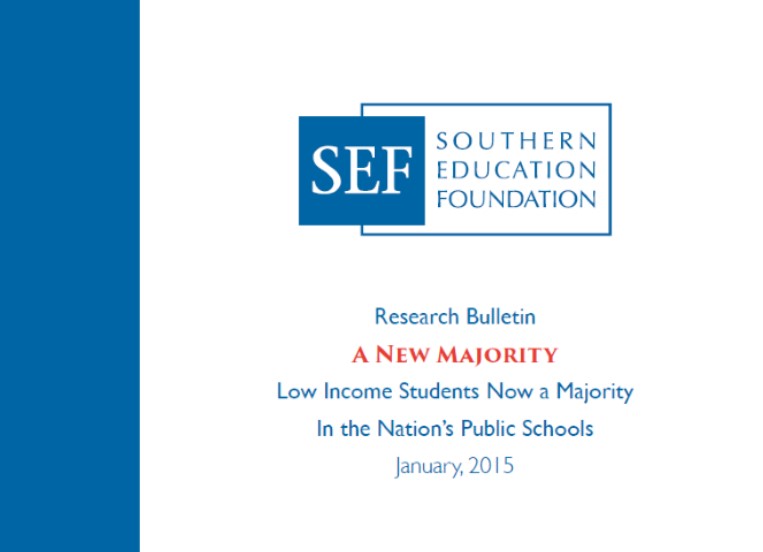
The report noted that “this defining moment in enrollment in public education in the United States comes as a consequence of a steadily growing trend that has persisted over several decades.”
In 1989, less than 32 percent of the nation’s public school students were low-income. By 2000, the national rate as compiled and calculated by NCES had increased to over 38 percent. By 2006, the national rate was 42 percent and, after the Great Recession, the rate climbed in 2011 to 48 percent, the report indicated.
The 2013 data suggests that six other states are on the verge of reaching a majority of low income students in the near future, if current trends continue. In Indiana and Oregon, 49 percent of the public schoolchildren were low income. In New York and Kansas, the rates were 48 percent. In Idaho and Michigan, rates were 47 percent.
The report concludes by stating t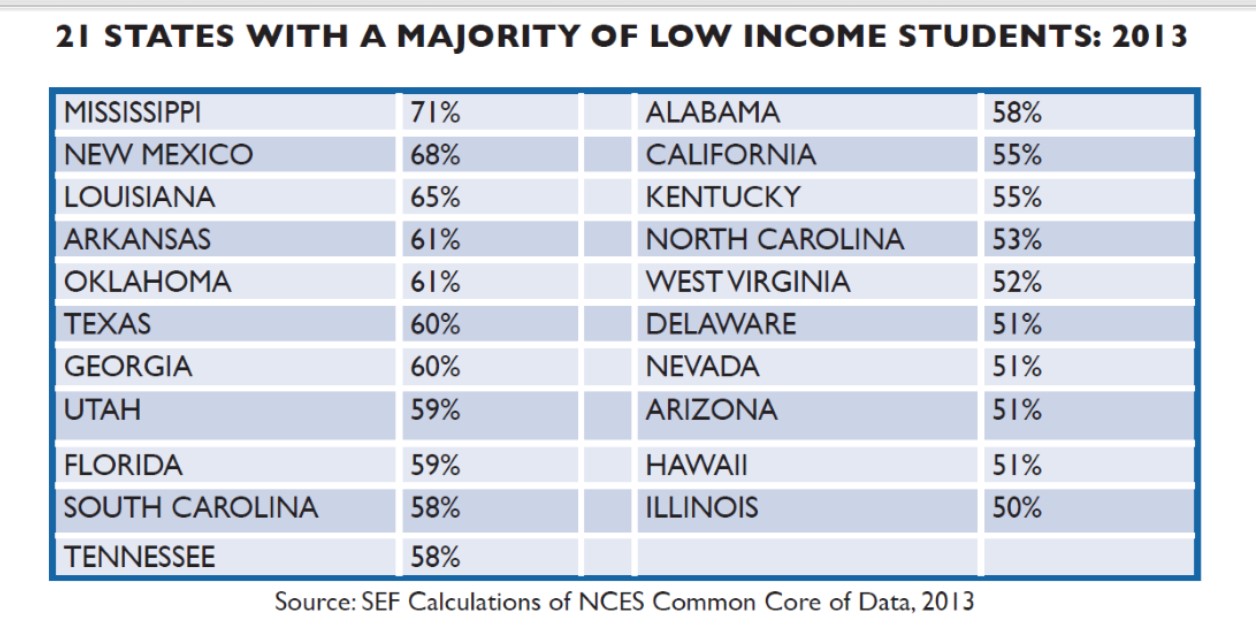 hat “The trends of the last decade strongly suggest that little or nothing will change for the better if schools and communities continue to postpone addressing the primary question of education in America today: what does it take and what will be done to provide low income students with a good chance to succeed in public schools? It is a question of how, not where, to improve the education of a new majority of students.”
hat “The trends of the last decade strongly suggest that little or nothing will change for the better if schools and communities continue to postpone addressing the primary question of education in America today: what does it take and what will be done to provide low income students with a good chance to succeed in public schools? It is a question of how, not where, to improve the education of a new majority of students.”
Founded in 1867 as the George Peabody Education Fund, the Southern Education Foundation’s mission is to advance equity and excellence in education for all students in the South, particularly low income students and students of color. The organization's "core belief is that education is the vehicle by which all students get fair chances to develop their talents and contribute to the common good."


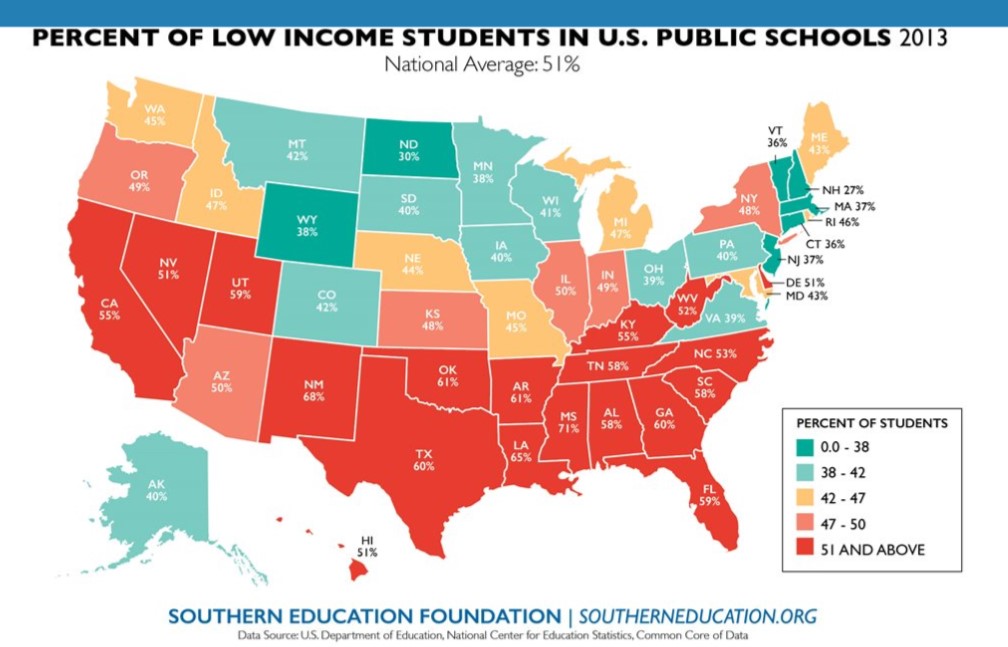
 The numbers are increasing nationally as well as in Connecticut. In 2013, for the first time in a decade, the number of low-income children eating summer meals saw a substantial increase year-over-year, according to a
The numbers are increasing nationally as well as in Connecticut. In 2013, for the first time in a decade, the number of low-income children eating summer meals saw a substantial increase year-over-year, according to a 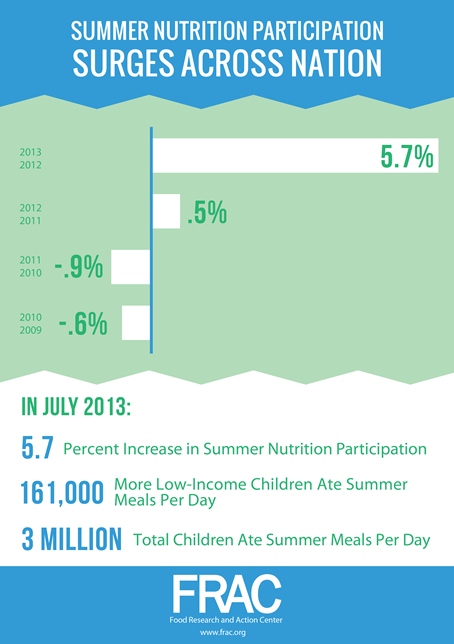
 The Summer Nutrition Programs, which include the Summer Food Service Program and the National School Lunch Program, are designed to fill the food gap for the thousands of low-income Connecticut children who rely on school breakfast and lunch during the school year. These programs provide free meals at participating summer sites at schools, parks, other public agencies, and nonprofits for children under 18.
The Summer Nutrition Programs, which include the Summer Food Service Program and the National School Lunch Program, are designed to fill the food gap for the thousands of low-income Connecticut children who rely on school breakfast and lunch during the school year. These programs provide free meals at participating summer sites at schools, parks, other public agencies, and nonprofits for children under 18.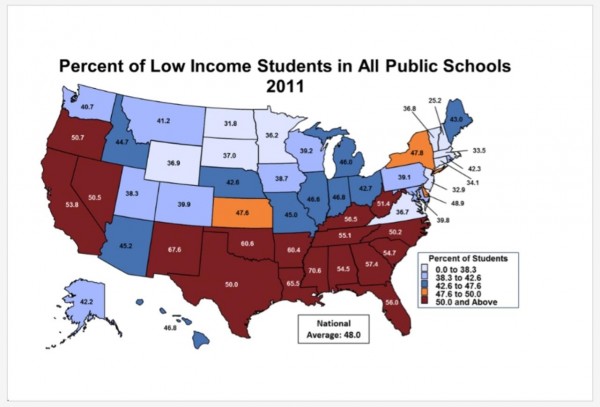 public schools moved from 38 percent of all students in 2001 to 48 percent in 2011.”
public schools moved from 38 percent of all students in 2001 to 48 percent in 2011.” st and 40 percent in the Northeast. The national average was 48 percent. As the report pointed out, “in 2011 the nation stood within only two percentage points of enrolling a majority of low income students in public schools across 50 states.”
st and 40 percent in the Northeast. The national average was 48 percent. As the report pointed out, “in 2011 the nation stood within only two percentage points of enrolling a majority of low income students in public schools across 50 states.”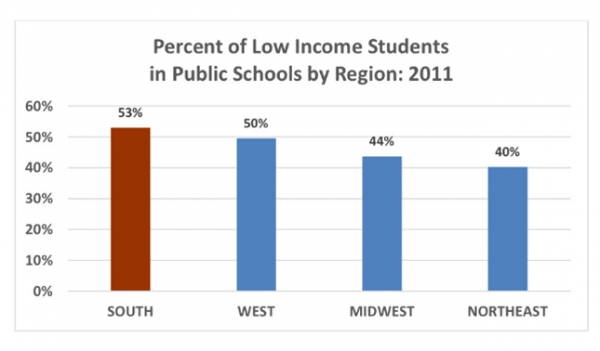
 ceed in public schools? It is a question of how, not where, to improve the education of a new majority of students.”
ceed in public schools? It is a question of how, not where, to improve the education of a new majority of students.”


























